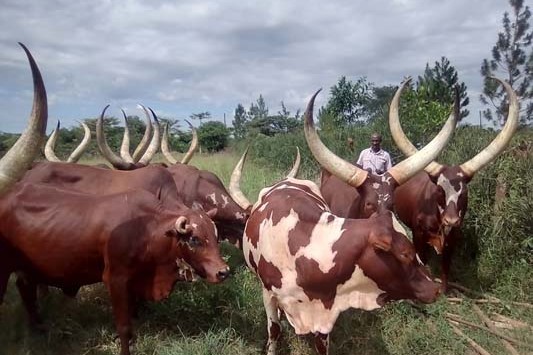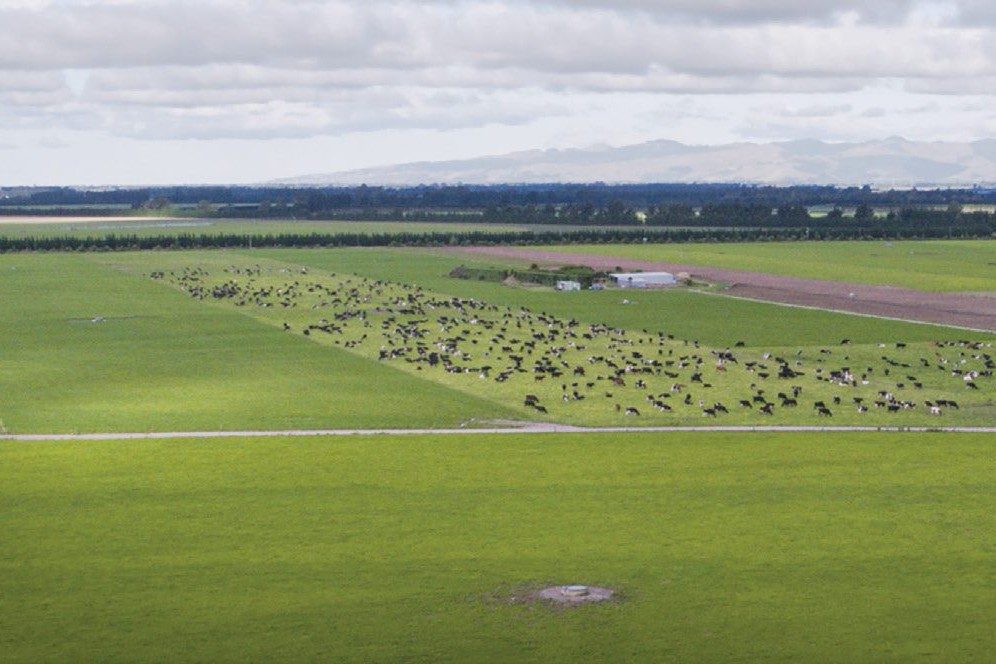Disruptions in gas supply and export bans by China have hit international fertiliser supplies. Phil Edmonds reports on the effects on New Zealand agriculture.
Towards the end of 2021 fears of a global food crisis started to ring out as fertiliser production slowed in Europe and key exporting nations turned their supplies inward to ease the risk of their own food insecurity.
New Zealand farmers may have shown little immediate concern for Europe’s problems, but they have quickly been part of the collateral damage as fertiliser prices have reached recent record highs. At the beginning of December urea was priced at about $1200/tonne. A year earlier it was under $350 and as recently as September 2021 was $590/t.
Believe it or not, NZ farmers are by no means the worst affected from what has unfolded, and despite perhaps feeling they’re being held to ransom, there are still some things farmers can do to limit the cost pressure.
The fertiliser price spike can’t simply be attributed to Covid-19 like many other inflationary cost increases. Instead, the last 12 months has seen a series of influential events that have collided at exactly the wrong time.
First, at a global level, food commodity prices started rising, prompted to some extent by displacement of labour at key seasonal timings – which was a Covid-19 derived factor. Global wheat, soy and corn prices increased to levels not seen since 2014 while meat, dairy, rice and edible oils have all followed the move.
As a direct result of this, demand quickly started rising for fertiliser to replenish soil nutrients that had been allowed to run down when commodity prices were not at levels that encouraged maximum production. This kicked in early this year, ahead of the northern hemisphere spring at exactly the same time that supply constraints started to emerge.
In the United States, several weather events stifled fertiliser production including a significant seasonal ‘freeze’ which impacted the manufacturing of nitrogen, and later there was some disruption to phosphate production due to Hurricane Ida. But the biggest handbrake was rising gas prices in Europe. The price lifted quickly to a point where producers of nitrogen simply stopped working because they could no longer make money. Rabobank senior agricultural analyst Wes Lefroy says soaring gas prices effectively shut down 12% of Europe’s nitrogen production.
If this wasn’t enough to fuzz the market, China simultaneously slapped export restrictions on its fertiliser exports with domestic fears over food security. China itself had experienced some electricity shortages and its supply has been compromised by the introduction of environmental measures which has impacted the phosphate market.
Ballance Agri-Nutrients sales general manager Jason Minkhorst says this move can’t be underestimated in pushing up prices.
“China had previously exported 35% of the world’s DAP and this year it will be 20%, with the export ban expected to stay in place until mid-2022.”
So, what does the northern hemisphere’s woes have to do with NZ, and why are China’s actions a big deal when NZ is not particularly reliant on its fertiliser exports?
Wes Lefroy says that even though NZ imports of fertiliser may not come directly from China, it is now facing competition in other markets from countries caught out by China’s blockade. The Middle East (particularly Morocco and Saudi Arabia) has seen demand for its nitrogen rise, and with it prices.
Finally, a further disruptor that is felt more in NZ than many others is the rise in Covid-19-related transport costs. Lefroy says shipping is still congested.
“Eighteen months ago, it took between six weeks and two months to get a laden ship berthed in your own port. Now it is taking between three and five months between procuring and landing.” Inevitably this means extra cost tied up in delays.
Ravensdown general manager Mike Manning says “If we’re picking up from an international port that’s been affected by a Covid outbreak, we can’t load when booked. Similarly, if large manufacturing plants have to temporarily shut for the same reason, product may not reach ports when anticipated.”
There’s no getting away from the fact NZ is heavily exposed to global fertiliser prices. But we are not necessarily as badly off as some others – which may be worth keeping in mind, even if it’s cold comfort to farmers seeing their core costs of production escalate.
In Australia for example, there has been a heightened sense of anguish over the past few months, to the extent that predictions were being made of fertiliser rationing and lower yields as a result. Both short, and long-term solutions to this have been discussed in Australia including changing crop rotations to favour crops that produce nitrogen including pulses and investigating the potential for domestic manufacturing of cheaper and greener fertiliser.
Nothing of this drastic nature has been mooted in NZ, however.
Mike Manning says Australia has a more limited window to apply fertiliser with its primary focus on arable crops. By contrast, NZ’s pasture system allows more flexibility and time to adjust to prices. For example, many farmers might plan to put fertiliser on in November, but it is not the end of the world if it is delayed a month. Rabobank’s Wes Lefroy notes that Australia typically imports 65% of its urea between April and July. In NZ it is spread throughout the year, albeit with a peak in the final third of the year.
A possibly more significant factor is that the majority of fertiliser in NZ is sourced from the two leading co-ops, which being farmer-owned and effectively mandated to ensure supply is available when needed, means they are likely to hold more product in storage, and less likely to run out. In contrast the Australian industry is dominated by corporates, who by their nature are more likely to try and trade with less stock.
Aad to that, NZ has the benefit of local production. Lefroy notes the Taranaki urea production plant certainly takes the pressure off the reliance on imported nitrogen in the North Island. It can enable imports to be more directed to the South Island, which gives another blanket of supply security.
While NZ farmers may have more confidence than their counterparts in other countries that the fertiliser cupboard won’t be bare when they need it, they are nonetheless faced with elevated prices, potentially for longer. Lefroy says if the global price dropped 50% tomorrow, it would still take a good few months to flow through given the shipping delays spoken of above.
So, what can farmers do to ease the cost pain?
Understanding potential margins and considering your appetite for risk are good starting points, suggests Lefroy.
If, for example, farmers have confidence the forecast high milk price will be realised, it probably makes sense to maintain higher soil nutrient levels albeit within regulations. But if margins were to tighten farmers could instead look to utilise the nutrients they have built up in the soil.
If farmers are more inclined to stick with planned fertiliser applications, they should be considering at what stage to make purchases. This involves weighing up the risk of missing out on a fall in prices in the autumn or the following spring versus locking in supply albeit at higher prices.
As far as the co-ops are concerned, providing advice on precision agriculture remains a key focus.
Mike Manning says just as Ravensdown can’t do much about international fertiliser prices, nor can farmers. However, farmers can look at being more diligent and a bit more prudent about how they use it.
“One of the ways to use nitrogen more efficiently is to be really clinical about feed supply and demand, considering where the gaps are. This can involve soil testing every paddock which gives farmers the ability to be more precise about soil deficiencies.”
Manning says Ravensdown are being asked for advice more than in the past, and this reflects a desire to be more efficient.
Ballance’ Jason Minkhorst says providing expert knowledge is the co-op’s business. He says there’s no sense farmers are deliberately wasteful, and indeed they can’t afford to be with the introduction of nitrogen limits. But there is clearly a renewed focus on efficient nutrient use.
One option to reduce exposure to high prices is for farmers to decouple their use of nitrogen and phosphate by shifting away from imported DAP toward locally manufactured phosphate. This allows farmers to more precisely dial up or down their use of nitrogen as necessary.
Minkhorst suggests the price hikes present farmers with an opportunity to reassess long-term fertility plans. This is something farmers make decisions on every year – understanding how they might treat areas with naturally high levels of phosphate differently to areas they have invested in to improve the fertility, and how they might use that fertility in a year where the payout may not be as supportive.
As to fears of global food shortages with the price of, and access to fertiliser becoming prohibitive, there’s no sense that it will slow NZ’s food production, particularly as we continue to see high farmgate prices for that production.
In terms of other markets, Lefroy says there is some reason to be concerned, but at the moment Rabobank is not expecting any decreases or shortages in food.
“India, which is doing a lot of buying at the moment, recently put out a tender for 1.6m tonnes of fertiliser and were offered 2.6m t. This shows there is still supply in the market.”
As to the coming 12 months, Lefroy says we may see the price of nitrogen come off between 10 and 20% if gas prices ease. But as commodity prices remain high then fertiliser prices will likely remain elevated. The second half of next year could start to see things ease, if China comes back to the global market in June. That’s still quite a long way away.
The key message then for farmers from both a financial and productive perspective is don’t expect a material fall in price anytime soon, and given that, precision is the best form of mitigation.





